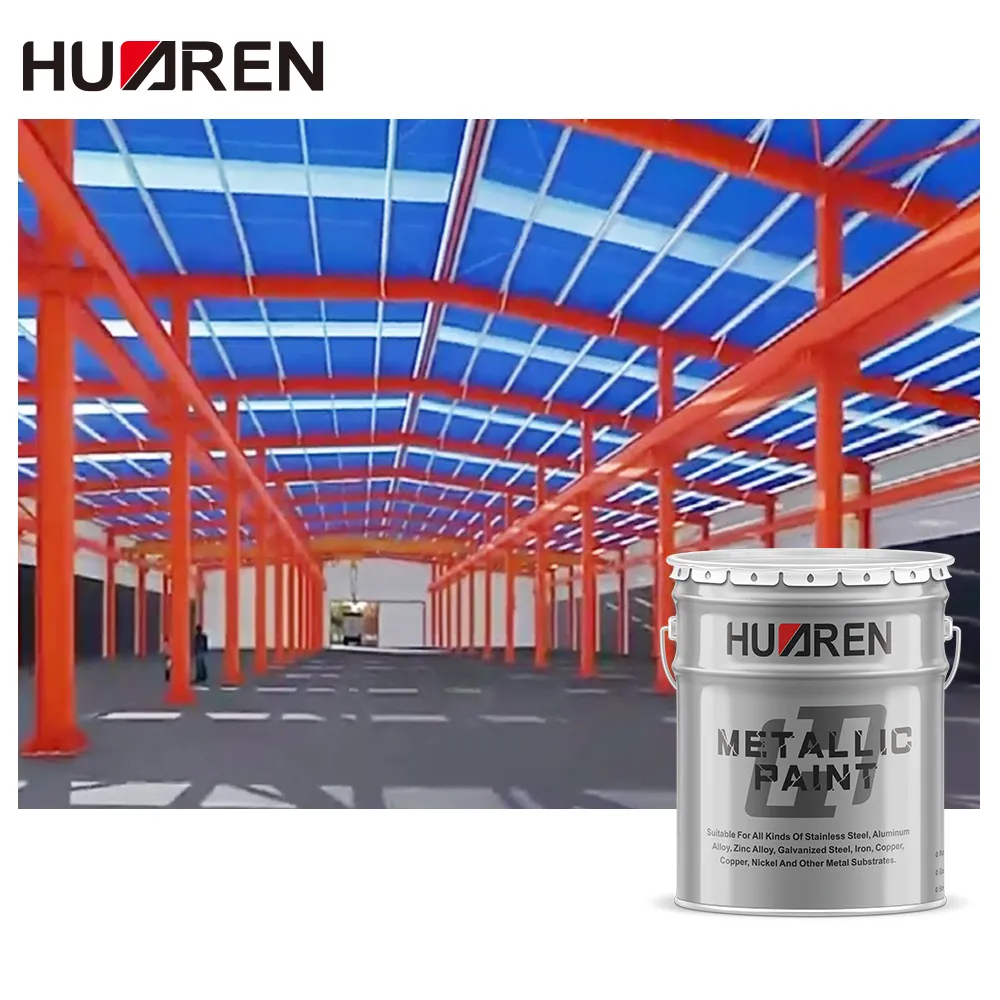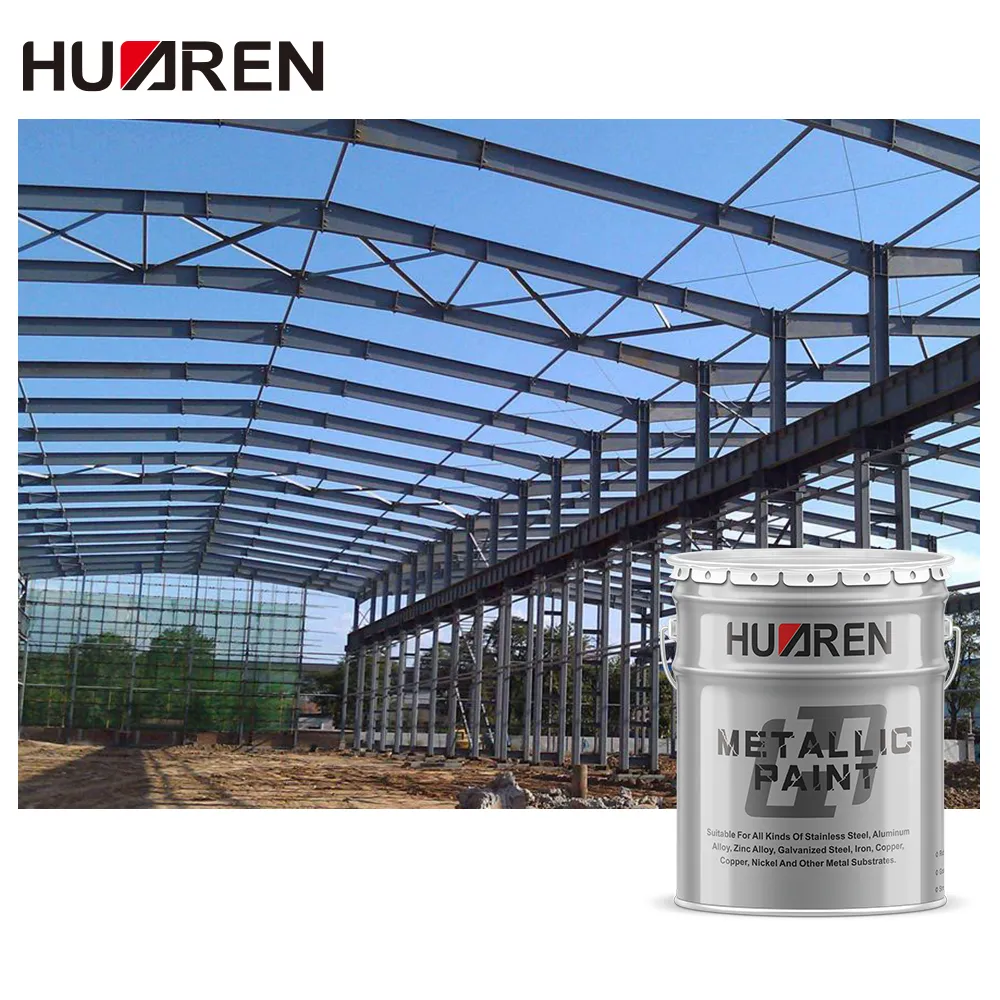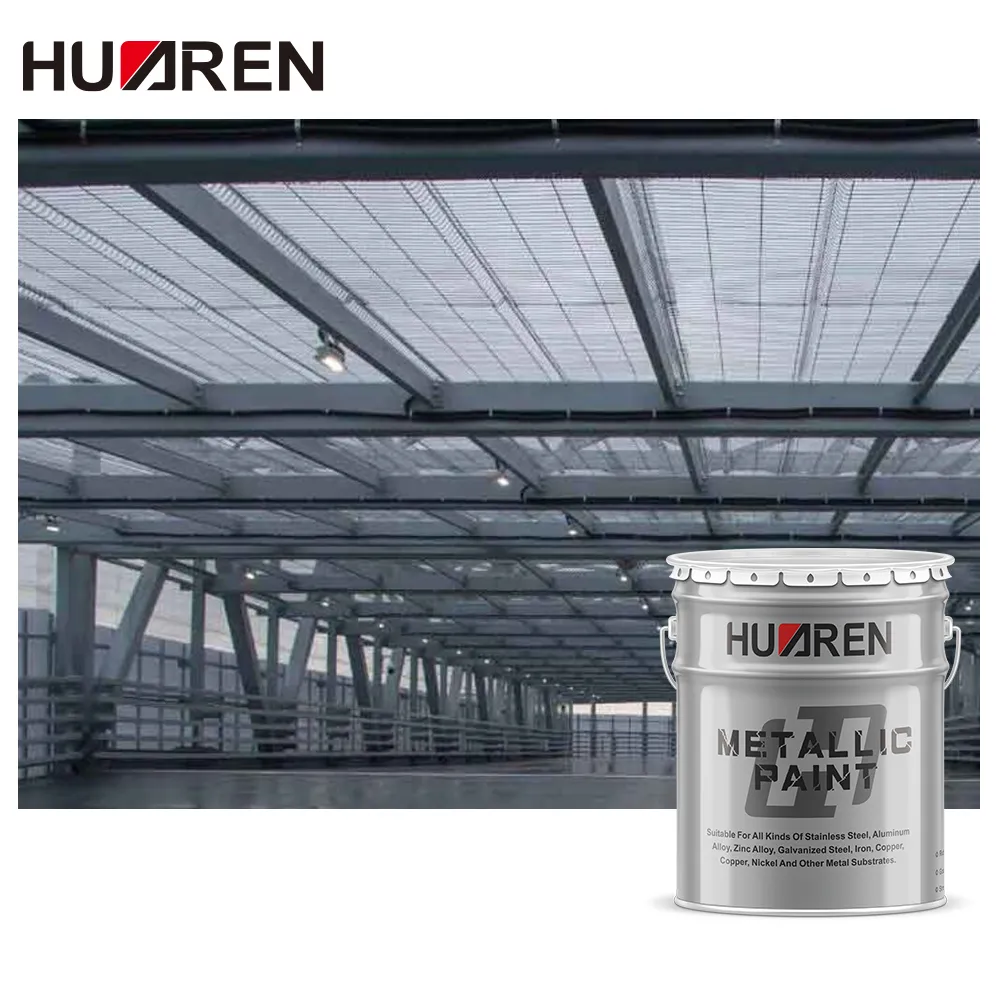Zinc rich primer is a coating specially designed for anti-corrosion of steel structures. It is widely used in construction, marine engineering, petrochemical and other fields because of its excellent protective properties. Zinc rich primer can be divided into organic zinc rich primer and inorganic zinc rich primer according to its ingredients. There are significant differences between the two in terms of formula, performance, application environment and construction requirements. In actual use, choosing a suitable zinc rich primer is crucial.
This article will discuss the differences between organic zinc rich primer and inorganic zinc rich primer in detail to help readers better understand the characteristics and application scenarios of these two coatings.

What is zinc rich primer?
The main component of zinc rich primer is zinc powder, which prevents corrosion of steel structures through electrochemical protection. When the coating is damaged, the zinc powder acts as a sacrificial anode to protect the underlying metal from corrosion. According to the carrier component of zinc powder, zinc rich primer can be divided into organic zinc rich primer and inorganic zinc rich primer.
● Organic zinc rich primer: Zinc powder is suspended in organic resin. Commonly used organic resins include epoxy resin, polyurethane resin, etc.
● Inorganic zinc rich primer: Zinc powder is suspended in inorganic substances such as inorganic silicate or ethyl silicate.
What are the properties of organic zinc rich primer?
Composition and ingredients
The main ingredients of organic zinc rich primer are zinc powder and organic resin. The content of zinc powder is usually more than 70%, and organic resin serves as a binder to firmly adhere the zinc powder to the steel surface.
● Epoxy resin: The most common type of organic zinc rich primer, with excellent adhesion and chemical resistance.
● Polyurethane resin: has better wear resistance and weather resistance, but the cost is higher.
Performance characteristics
●Excellent adhesion: Organic resin can form good adhesion with the steel surface and can adhere firmly even to relatively smooth surfaces.
● Good construction performance: Organic zinc rich primer usually has good construction performance, moderate drying speed, and is suitable for various construction methods such as manual brushing and spraying.
● Elasticity and impact resistance: Organic resin gives the coating a certain degree of elasticity and impact resistance, making it suitable for use in dynamic load environments.
● Chemical resistance: Especially the organic zinc rich primer of epoxy resin system has excellent chemical corrosion resistance and is suitable for use in acidic and alkaline environments.
Application scenarios
Organic zinc rich primer is widely used in the following fields:
● Marine environment: Such as ships, offshore platforms, etc., which require strong adhesion and resistance to salt spray corrosion.
● Industrial facilities: such as petrochemical equipment, storage tanks, pipelines, etc., places that require chemical corrosion resistance and impact resistance.
● Building structure: Suitable for steel structure buildings that require anti-corrosion protection, especially areas prone to mechanical damage.

What are the characteristics of inorganic zinc rich primer?
Composition and ingredients
Inorganic zinc rich primer is mainly composed of zinc powder and inorganic silicate or ethyl silicate. The zinc powder content is usually higher, generally above 75%. Inorganic silicates act as binders and form strong chemical bonds with the steel surface.
● Ethyl silicate: The most common inorganic zinc rich primer adhesive, with excellent high temperature resistance and weather resistance.
Performance characteristics
● Extremely high weather resistance: Inorganic zinc rich primer has excellent weather resistance and is suitable for use in extreme climate conditions. It can withstand long-term exposure without failure.
● High temperature resistance: Inorganic components enable inorganic zinc rich primer to withstand high temperature environments and can generally maintain stable performance at temperatures above 400°C.
● Excellent UV resistance: Inorganic components have strong resistance to UV rays, and the coating will not powder or age due to long-term exposure to sunlight.
● Hard and highly brittle: The inorganic zinc rich primer coating is very hard, but it is also relatively brittle and prone to cracks when subjected to mechanical impact.
Application scenarios
Inorganic zinc rich primer is suitable for the following fields:
● High-temperature environment: Such as high-temperature pipelines and boiler outer walls in the petrochemical industry, which require high-temperature protection equipment.
● Long-term exposed steel structures: such as bridges, tower masts, storage tanks, etc., structures that require long-term weather resistance and UV protection.
● Marine installations: In places such as ship hulls and underwater structures where extremely high anti-corrosion performance is required, especially when combined with other coating systems.
Organic zinc rich primer VS. Inorganic zinc rich primer: What is the difference?
Anti-corrosion properties
Both have excellent anti-corrosion properties, but perform differently in different environments.
● Organic zinc rich primer: performs well in general industrial environments and chemically corrosive environments, but is less resistant to high temperatures and long-term exposure.
● Inorganic zinc rich primer: Excellent anti-corrosion performance in high temperatures and extreme environments, especially suitable for steel structures exposed for a long time.
Adhesion
● Organic zinc rich primer: It has stronger adhesion and wider adaptability on untreated or insufficiently surface-treated steel surfaces.
● Inorganic zinc rich primer: requires higher surface treatment standards, usually sandblasting to Sa 2.5 or above level to ensure sufficient adhesion.
Weather resistance
● Organic zinc rich primer: may age after long-term exposure to the environment and requires regular maintenance and recoating.
● Inorganic zinc rich primer: It has excellent weather resistance and can remain in good condition after being exposed to the outdoor environment for a long time.
Construction difficulty
● Organic zinc rich primer: The construction is relatively simple, suitable for a variety of painting methods, and the drying time is moderate.
● Inorganic zinc rich primer: The construction requirements are higher, the coating is relatively hard and brittle, and the environmental temperature and humidity need to be strictly controlled during the construction process.
Chemical resistance
● Organic zinc rich primer: has good chemical resistance, especially suitable for acid and alkali environments.
● Inorganic zinc rich primer: relatively weak in chemical resistance, but performs well in oxidizing environments.
Cost effective
● Organic zinc rich primer: Generally speaking, the cost is relatively low, suitable for large-area use and more frequent maintenance and recoating.
● Inorganic zinc rich primer: More expensive, but due to its long-term durability, suitable for applications where reduced maintenance is desired over a longer period of time.

How to choose the zinc rich primer that's right for you?
The choice of organic or inorganic zinc rich primer should be based on specific application needs and environmental conditions. Here are some suggestions:
● For steel structures that are exposed to high temperatures or for a long time outdoors: Choose inorganic zinc rich primer, which provides better weather resistance and high temperature resistance.
● For locations requiring high adhesion and chemical resistance: Choose organic zinc rich primer, especially in factory environments or marine facilities.
● If you have a limited budget and require regular maintenance: organic zinc rich primer may be a more economical option.
● If the coating is required to maintain stability for a long time under extreme conditions: inorganic zinc rich primer will be a more suitable choice.
Summary of organic vs inorganic zinc primer
Organic zinc rich primer and inorganic zinc rich primer each have their own advantages and are suitable for different application scenarios. Understanding their differences, especially corrosion protection, adhesion, weather resistance and application requirements, can help you choose the most appropriate coating system for your specific project. Whether in the marine, industrial or construction fields, the right choice will significantly increase the service life and maintenance efficiency of steel structures.

